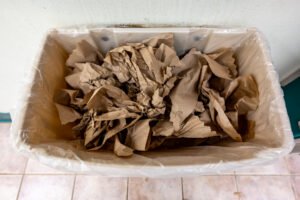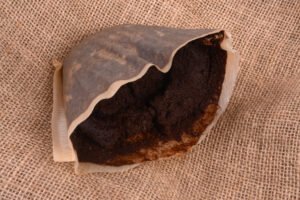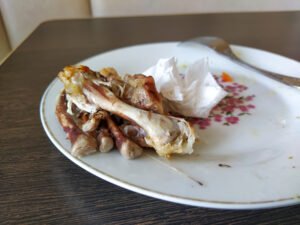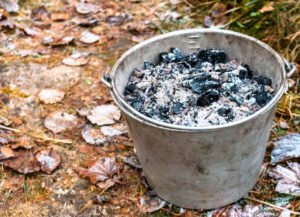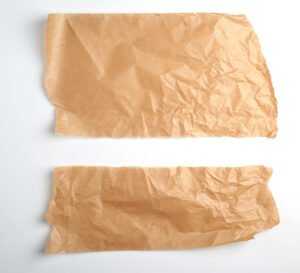Most of us love bananas. But have you ever wondered if the banana peels could be reused? Well, they can be used for your garden and even houseplants. But how? Can you add banana peels directly to the soil? Or can you compost them? Let us find out!
Key Takeaways
- Banana peels are compostable and add organic matter to your soil. They are high in potassium and make an excellent soil additive for flower and fruit growth.
- Banana skin is soft and degradable and can be easily composted through Hot Composting, Cold Composting, and Vermicomposting. The methods are explained below!
- For faster results, cut the banana peels into small chunks before adding them to the compost pile. You can find many more cool tips in the article.
- Banana peels can also be used to make a nutritious liquid fertilizer for plants. Want to know how? Continue reading!
How To Compost Banana Peels?
Banana peel breaks down quickly, making it a great composting material. It can be composted through standard methods like hot composting and cold composting or used in worm bins.
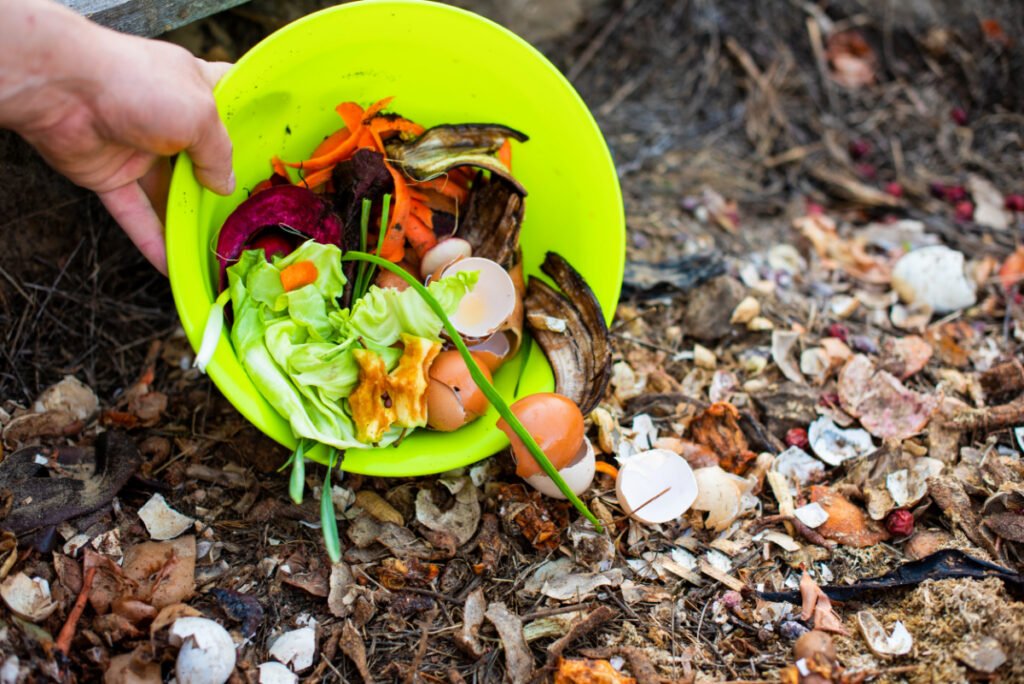
Below is the step-by-step process for composting banana peels via hot or cold composting or in a regular compost pile in the backyard.
Step 1. Prepare the Compost Bin
Get a Compost bin from the market or online or DIY one with any junky plastic bucket or container with a lid by poking holes around it.
Step 2. Add Brown Materials
At the bottom of the bin, make a firm layer of brown materials like wood chips, shredded cardboard, dry branches, straw, ash, etc. Make sure to chop them into smaller pieces.
Brown, carbon-rich materials provide food for the microorganism in the compost pile.
Step 3. Mix Banana Peels with Food Scraps
Collect the banana peels and remove their stickers (if any). Then wash them, cut them into smaller pieces, ideally 1-2 inches, and mix them with other kitchen scraps like chopped vegetable peels, eggshells, etc.
Then, make a thick layer of this green composting material over the browns. Green materials are rich in nitrogen and help in microbial growth.
Step 4. Repeat the Layers
Now, repeat the process by altering the green and brown layers.
Once you have composted all the stock, cover it with a firm layer of soil of 2-inches.
Green materials contain water, and brown materials absorb excess water. So it is essential to balance greens and browns in the compost bin.
Step 5. Add Water to the Compost Pile
Your compost pile needs to be moist to carry out the decomposition. So, add adequate water to your compost pile every 3-7 days.
You can always add some extra brown materials like cardboard, wood chips, etc. if there is excess water in the compost heap.
Step 6. Maintain the Compost Heap
Banana peels require oxygen to decompose quickly. So, turn the compost heap in 3-7 days or poke holes with a pitchfork to keep it aerated.
Provided with ideal conditions, your compost may be ready in 3-4 weeks.
Can You Put Banana Skins in a Worm Farm?
Yes, banana peels can be used for vermicomposting because Red wiggler worms love to eat them. When adding banana skin to a worm bin, cut them into small pieces and mix them with other green materials.
Once the worms start feeding on them, they will produce worm casting, vermicast, or vermicompost, which act as organic fertilizer for plants. In worm bins, banana peels only take 2-3 weeks to break down entirely if they are adequately maintained.
Can You Bury Banana Peels Directly Into The Soil?
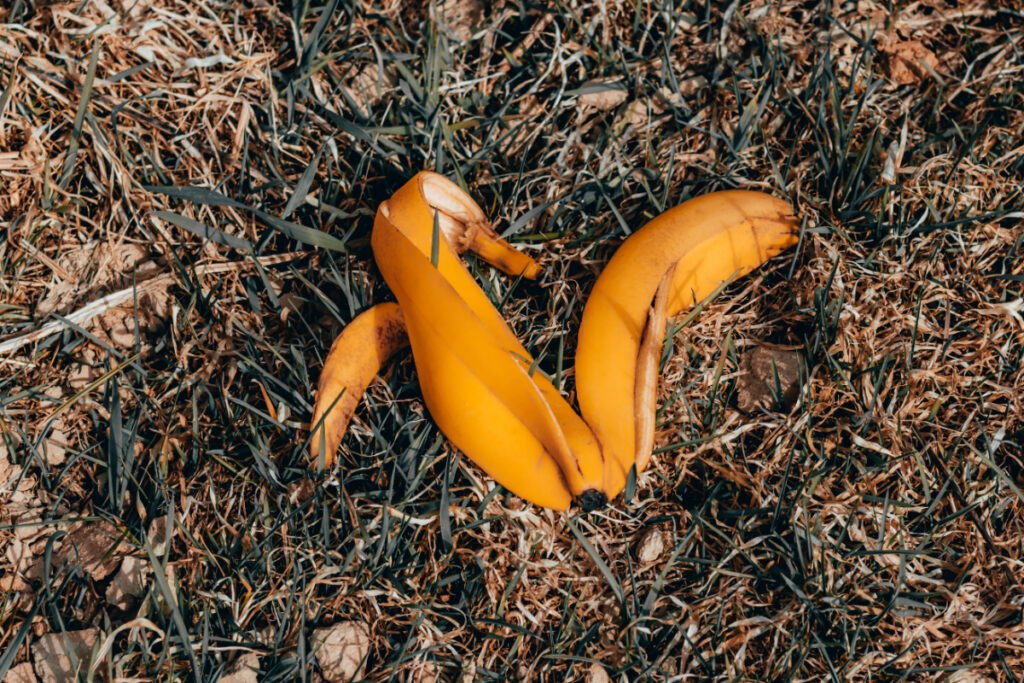
Banana peels can be added directly to the soil, but it takes more time to decompose. Also, you would need to bury them very deep into the soil instead of throwing them on the top layer of the soil.
However, since banana peels need air to decompose, covering them deep in the soil might hinder the oxygen supply and delay the degradation. Therefore, composting banana skin is considered the best method to reuse it.
Moreover, it is estimated that if a whole banana peel is left on the soil, it will take up to 2 years to decompose entirely.
Benefits of Composting Banana Peels
Not only bananas, their skin too has loads of nutrients and is loved by plants. So composting them is a great idea.
But if you aren’t convinced yet, here are some benefits of composting banana skin you must know:
- Bananas are composed of 91% organic matter, making them a great addition to your soil.
- Banana peels are rich in nutrients like Potassium, Calcium, magnesium, and Sodium and contain trace amounts of sulfur, phosphate, iron, zinc, and Manganese. All these nutrients together help in plant growth.
- Banana peel compost saves you from spending on chemical fertilizers.
- Banana peels help the compost retain water.
- Composting banana peels is eco-friendly and also reduces food wastage.
- It is a quick process, and you can get compost ready quickly.
Additional Tips For Composting Banana Peels
If you’ve made up your mind to compost banana peels, here are some essential tips to help you do it easily and efficiently.
- Remove the stickers on banana peels. They are composed of Vinyl or plastic and are non-biodegradable. They generally go unnoticed due to their size, but even small quantities of such material may contaminate your compost.
- Add the banana peels with other green and brown materials to maintain the carbon-nitrogen balance in a pile.
- Cut the banana skin into tiny pieces.
- Keep your compost heap moist for faster decomposition of peels.
- Turn your compost pile at regular intervals.
Can You Use Banana Peels as Fertilizers?
Yes, Banana skin is rich in nutrients and serves as fertilizer for garden plants, houseplants, or potted plants.
Plants like cucumber, pepper, and radish love to be supplemented with banana peels. Moreover, the tomato plant shows rapid growth, and the Rose plants bloom when provided with banana peel fertilizer.
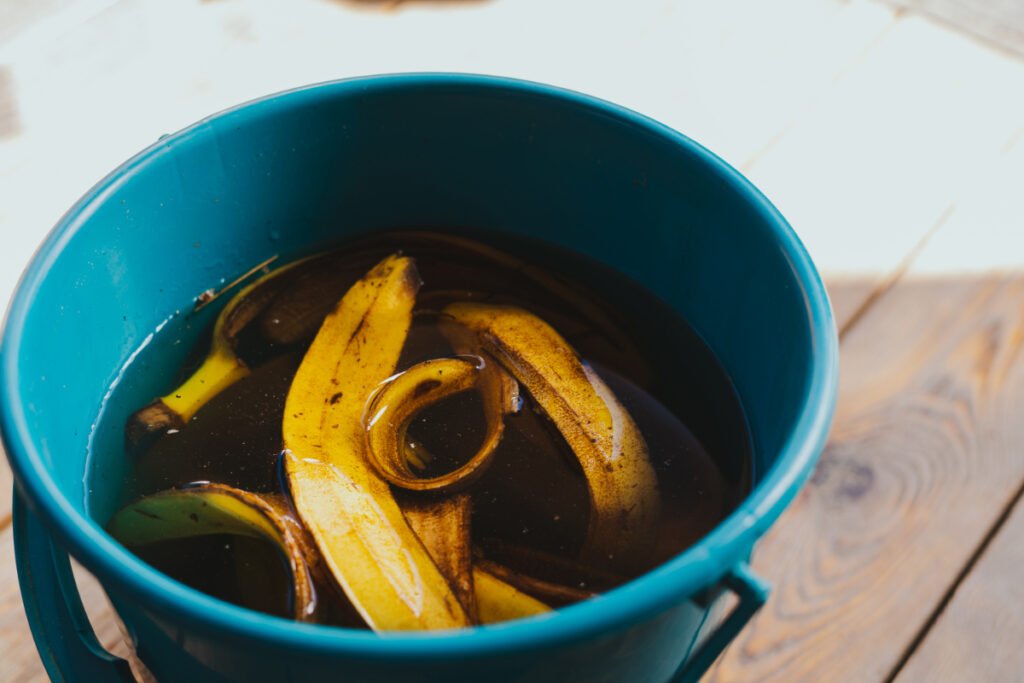
But how to make this fertilizer? Here are a few methods you need to know.
1. Brew Compost Tea: Banana peels can be used as fertilizer by making compost tea. Here are the steps you need to follow to make banana peel compost tea.
- Fill a jar with water.
- Cut banana peels into pieces and add them to the jar.
- Leave it for 24 hours for the nutrients to dissolve in the water.
- Now, strain the liquid and refrigerate it. You can use this compost tea after diluting it in 4-5 liters of water.
The leftover banana peels may still be left with some nutrients and can be composted.
Banana peel tea can also be used to control aphids. Simply dilute the solution in a 1:5 ratio and mix it well. Then, fill it in a spray bottle and apply it to the plant leaves and branches.
2. Dry Fertilizer: You can also make fertilizer with dried banana peels. For this, dry the peels in the sun or bake them at 140 degrees Celsius. Then crush them using a spice grinder.
This powder can be used as dry fertilizer for your plants. You can also use it by adding the powder to water and spraying it as a foliar spray.
3. Make Banana Peel Slurry: Another way to use banana skin for your garden plants is by making a slurry out of peels. Take banana peels and grind them. Then dig the soil and bury the slurry near your plant as a side dressing.
4. Make Calcium-rich Fertilizer Spray: Banana peels work wonders as a fertilizer. But when you add Epsom salt and eggshells to the mix, you will be amazed by the results. This calcium-potassium-rich fertilizer is an excellent addition to your garden soil.
Below are the steps to make this fertilizer.
- Take 3 eggshells and crush them.
- Now grind 3-4 banana peels into fine powder or slurry.
- Add one tablespoon of Epsom salt to the mixture.
- Add some water, mix the three ingredients, and leave it to settle for 48 hours.
- You can now strain the liquid, dilute it and use it as a spray fertilizer.
Can Banana Peel Be Used As An Insect Trap?
Banana peels can be used to attract fungus Gnats and fruit flies. Follow these steps to make an insect trap:
- Take a plastic container with a lid.
- Add some chopped banana peels to it.
- Add apple cider vinegar to the container and ensure it covers the banana peels.
- Next, make holes in the container lid. The holes should be big enough to allow the fungus gnats and fruit flies to enter.
The scent of the bananas and the apple cider vinegar will attract the insects, and when they enter the container, they will drown and die.
How long does it take banana peels to compost?
Banana peels take 3-4 weeks to break down entirely in a compost bin. But for this, you need to cut your bananas into smaller pieces. If you add a whole banana peel, it might take a few months to decompose completely.
Are banana peels green or brown compost?
Banana peels are green composting materials as they provide nitrogen to the compost. In addition, they contain water which helps to regulate the decomposition process.
Can you compost overripe bananas?
Yes, over-ripen bananas can be composted. They will escalate the composting process as they are ready to rot or decompose. However, remember to cut the ripe banana peel along with the fruit into smaller pieces to ensure faster decomposition.
Can you compost rotten bananas?
Rotten bananas are on the way to decomposition and can be added to the compost bin. But there’s a condition. If bananas become over-ripe and rot, they can be composted. But, if the rotting is due to any disease, using such bananas can ruin your compost.
Can you compost banana leaves?
Banana leaves are a great addition to your compost bin. They serve as green material and can add nitrogen to your compost. But remember to chop the leaves into small pieces before tossing them into your compost pile.
Like the fruit, banana peel is loaded with nutrients and can become your closest friend in your gardening journey. So next time you munch on bananas, don’t forget to toss their skin into your compost bin.
Orange peels are another excellent composting material, just like banana peels. So, if you want to learn more about composting orange peels, we have everything you need.
Happy composting!


